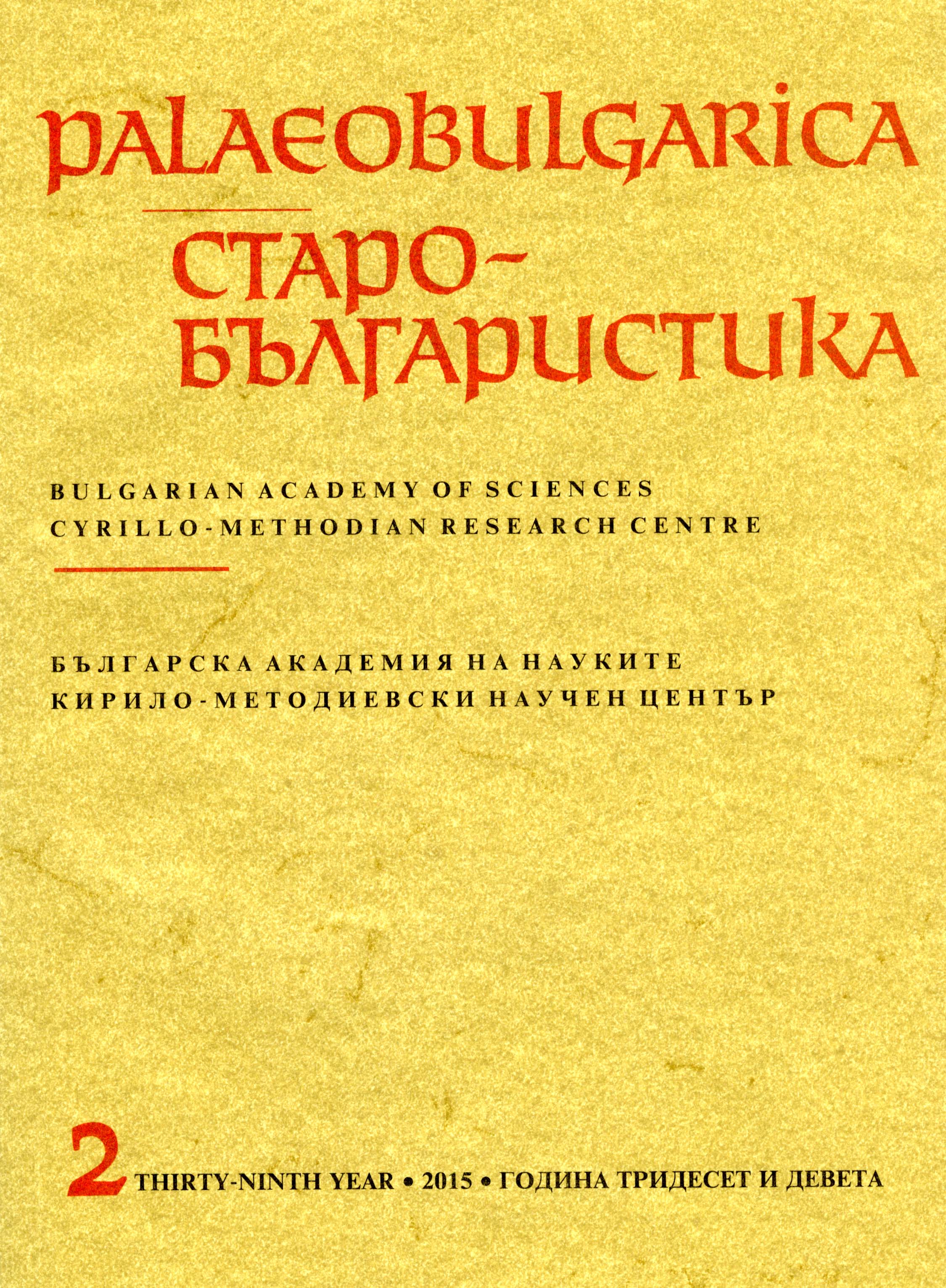Надписи с литургиен произход от олтарното пространство на църквата „Св. Петър“ при с. Беренде
Inscriptions of Liturgical Origin in the Sanctuary of the St. Peter Church in Berende Village
Author(s): Christo AndreevSubject(s): Language and Literature Studies, Archaeology, Visual Arts
Published by: Кирило-Методиевски научен център при Българска академия на науките
Summary/Abstract: The article examines five prayer incipits used as inscriptions on the rolls held by the hierarchs depicted in the Melismos composition in the sanctuary of the St. Peter Church, situated in close proximity to Berende village (Western Bulgaria). The arrangement of the fragments mirrors the progress of the Liturgy of St. John Chrysostom from the North to the South, i.e. from the prosthesis to the diakonikon of the church. Saint Basil the Great (Basil of Caesarea) is holding a roll with the prothesis prayer (боже боже нашь. еже небеси), followed by St. Athanasius of Alexandria with the prayer at the beginning of the Great En-Entrance (никтжое достоиинь...), St. Gregory the Theologian with the beginning of the anaphora (достоино и праведно тебе пѣти...), St. John Chrysostom with the Incense Prayer (кадило приносимь прѣдь тѧ) and St. Constantine-Cyril the Philosopher with the Opisthambonos Prayer (блвѧи блвѧщѫѫ тѧ и стѧ...). The selected liturgical fragments fix the Prothesis rite, the Great Entrance, the Anaphora, the Communion and the Concluding rites in the Liturgy of St. John Chrysostom and indicate that an eucharistic formulary, which included an Incense Prayer after Communion, was most probably used. A similar practice has been observed in the patriarchal diataxis BL Add. 34060 (12th century) and in Arabic pontifical version (AD 1260) of the Liturgy of St. John Chrysostom. The incipit of the Incense Prayer is of an Eastern (Palestinian) type and is similar to the early examples in Sin. Slav. 37 (11th century), RNB Q.p.I.68 (second half of the 13th century), HAZU IIIa32 (before 1346). Four other examples of epigraphs in Cyrillic from churches in Western Bulgaria and Serbia, dating back to the end of the 13th century up to the 80s of the 14th century, have similar incipits. This reveals a sustainable trend in the use of early Eastern liturgical elements until the practice described in the Diataxis of Philotheos Kokkinos became firmly rooted. On the basis of a newly-published inscription from the St. Nicholas Church in Kalotina (situated along the present-day Bulgarian-Serbian border) we are able to pinpoint the date of decoration of the St. Peter Church sometime between the spring of 1331 and October 1332. The murals in the St. Nicholas Church in close proximity to Staničenje village (region of Pirot, Serbia), which display certain cultural and historical similarities to those discovered in Berende, also date back to 1331/1332. The inscriptions from the three churches examined by the author are regarded as important evidence of historical developments in Western Bulgaria until the beginning of the reign of the Bulgarian Tsar Ivan Alexander Asen (1331–1371).
Journal: PALAEOBULGARICA / СТАРОБЪЛГАРИСТИКА
- Issue Year: 2015
- Issue No: 2
- Page Range: 48-93
- Page Count: 46
- Language: Bulgarian
- Content File-PDF

